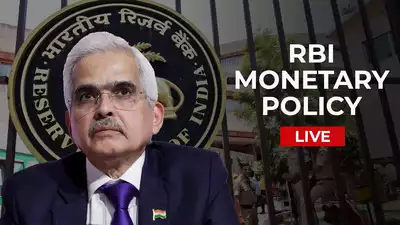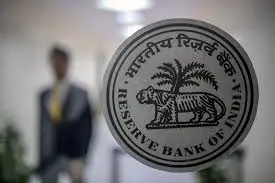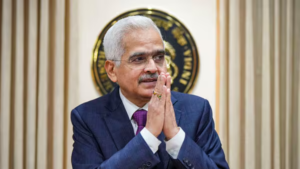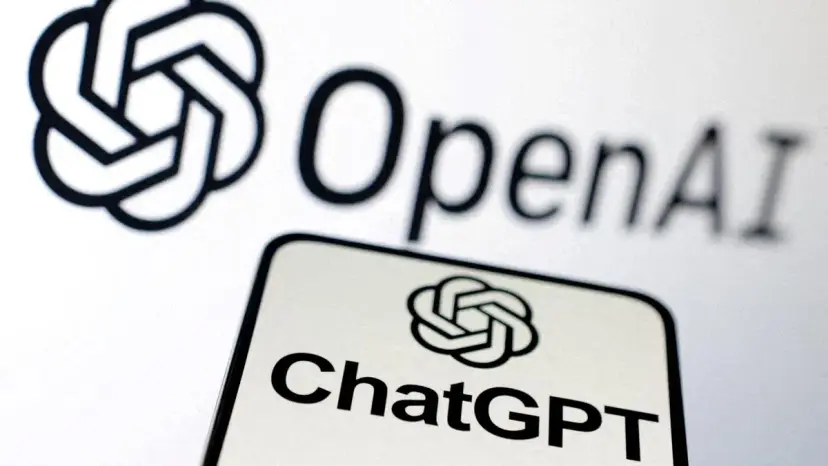

RBI Monetary Policy Committee Meeting: December 2024 Highlights
RBI concluded the December 2024 monetary policy committee meeting with a cautious and balanced approach to controlling challenges in the country’s economy. Even though high inflation and slowdown of growth were matters of concern, the central bank has taken an easy way out by not cutting the main policy rate, repo rate, but increasing other supportive liquidity and banking sector stability measures.
Let’s dive into the key decisions and their implications.
Repo Rate Kept Static
RBI Governor Shaktikanta Das announced that the repo rate would remain at 6.5%, marking the 11th consecutive instance of the rate being held steady. The decision aligns with the RBI’s neutral policy stance, aiming to strike a balance between controlling inflation and fostering economic growth.
Governor Das clarified that by not changing the repo rate currently, the RBI can easily track the trends of inflation and economic situations. Since it doesn’t make such sudden changes, the central bank intends to provide businesses and consumers with stability and predictability amid current uncertainties.
GDP Growth Projection Revised
One of the key announcements from the MPC meeting was the downward revision of India’s GDP growth projection for FY 2024-25. The RBI cut its forecast from 7.2% to 6.6%, citing a sharper-than-expected slowdown in economic activity.
The latest GDP data disclosed a seven-quarter low to 5.4% in the July-September quarter. It has alarmed the deceleration into the overall trajectory of the Indian economic recovery, so the central bank adopted more conservative views.
CRR Slashed to Boost Liquidity
In a bid to address tightening liquidity in the banking system, RBI reduces the Cash Reserve Ratio (CRR) by 50 basis points to a level of 4 percent from 4.5 percent. This would translate into infusing about ₹1.16 lakh crore into the banking system and making banks more capable of lending.
The CRR is the part of deposits that banks must hold in the RBI without earning interest. Lowering the CRR frees up funds that banks can use to lend, which may promote economic growth.

Why Was the CRR Cut?
The decision to slash the CRR comes against the backdrop of a liquidity crunch caused by the RBI’s measures to stabilize the rupee. Dollar sales by the central bank to support the currency have strained liquidity. Additionally, December is a period of heightened liquidity demands due to advance tax payments, GST outflows, and quarter-end credit requirements.
The cuts in CRR ease the burden, making sure that banks have adequate amounts for siphoning off against lending requirements. As banks are able to enjoy the excess liquidity, there is even a possibility for this saving to be transmitted downward to the borrowers as reductions in lending rates.
Implication on the Banking Sector
The CRR cut would be net interest margin accretive for banks, making them more profitable. So, with ₹1.16 lakh crore freed up, they’ll have more room to spend on lending or investments.
By cutting CRR, the RBI has given banks an opportunity to increase their lendable capacity,” said VRC Reddy, Head of Treasury at Karur Vysya Bank. “This could result in banks lending more that would help boost economic growth.”
More importantly, this will also lighten the credit availability for businesses as well as consumers, hopefully boosting demand in key industries.
Inflation and Monetary Policy
High inflation remains a pressing concern for the RBI, influencing its cautious approach. The central bank’s focus is on ensuring price stability while supporting economic growth.
The unchanged repo rate reflects the RBI’s assessment that any premature rate hikes could stifle growth further, particularly in a period of economic slowdown. At the same time, the central bank remains vigilant, ready to intervene if inflationary pressures intensify.

Outlook for FY 2025-26
Looking ahead, the RBI projected GDP growth for FY 2025-26 at 6.6%. This reflects the central bank’s expectation of a gradual recovery supported by accommodative policies and structural reforms.
However, external factors such as global economic conditions, geopolitical uncertainties, and commodity price fluctuations will play a significant role in shaping India’s growth trajectory.
Key Takeaways
Repo rate stability: In effect, keeping the repo rate is a bet on keeping the central bank neutral and allowing growth to find its way towards solving inflation.
Boost in Liquidity: The decrease in CRR injects much-needed liquidity into the banking system, enhances credit availability, and potentially reduces borrowing costs.
Downsized Growth Projection: A lower level of GDP growth forecast warns one of caution as the performance of the economy is slowing down.
Focus on Inflation Management: High inflation continues to be a challenge; the RBI is keeping watchful eyes on future monetary moves.
Conclusion
The December 2024 MPC meeting reflects the Reserve Bank of India’s efforts in trying to navigate a complex economic landscape. While the steady repo rate reflects a commitment to stability, the reduction in CRR is a proactive measure to deal with liquidity constraints and spur growth.
As the Indian economy faces headwinds in the form of slowing growth and persistent inflation, the central bank’s calibrated approach would provide a foundation for recovery while ensuring financial stability.
In the coming months, all eyes will be on how these policy measures translate into tangible outcomes, particularly in sectors like banking, manufacturing, and services. With a cautious yet forward-looking stance, the RBI has laid the groundwork for navigating these challenges effectively.






Your article helped me a lot, is there any more related content? Thanks!
Thanks for sharing. I read many of your blog posts, cool, your blog is very good.
Can you be more specific about the content of your article? After reading it, I still have some doubts. Hope you can help me.
I don’t think the title of your article matches the content lol. Just kidding, mainly because I had some doubts after reading the article.
Thank you for your sharing. I am worried that I lack creative ideas. It is your article that makes me full of hope. Thank you. But, I have a question, can you help me?
Can you be more specific about the content of your article? After reading it, I still have some doubts. Hope you can help me.
Your point of view caught my eye and was very interesting. Thanks. I have a question for you.
Your point of view caught my eye and was very interesting. Thanks. I have a question for you.
ремонт кофемашины saeco ремонт кофемашин nespresso
ремонт швейных машин недорого ремонт швейных машин dexp
1с облако личный кабинет вход https://1c-oblako-msk.ru
задать вопрос юристу в чате задать вопрос адвокату бесплатно
Нужны пластиковые окна: заказать сетки на пластиковые окна
Нужен вентилируемый фасад: подсистемы для навесных вентилируемых фасадов
nyc package delivery service freight shipping ny
nyc package delivery service shipping from new york to florida
оценка бизнеса заказать сайт оценочной компании Москва
cheap vps hosting https://vpsserverhosting1.com
косметологическая лампа тележка косметологическая купить
купить бетон доставка бетона саратов
Цены на ремонт https://remontkomand.kz/ru/price квартир и помещений в Алматы под ключ. Узнайте точные расценки на все виды работ — от демонтажа до чистовой отделки. Посчитайте стоимость своего ремонта заранее и убедитесь в нашей прозрачности. Никаких «сюрпризов» в итоговой смете!
Планируете ремонт https://remontkomand.kz в Алматы и боитесь скрытых платежей? Опубликовали полный и честный прайс-лист! Узнайте точные расценки на все виды работ — от демонтажа до чистовой отделки. Посчитайте стоимость своего ремонта заранее и убедитесь в нашей прозрачности. Никаких «сюрпризов» в итоговой смете!
I don’t think the title of your article matches the content lol. Just kidding, mainly because I had some doubts after reading the article.
Нужен клининг? список клининговых компаний москвы. Лучшие сервисы уборки квартир, домов и офисов. Сравнение услуг, цен и отзывов, чтобы выбрать надежного подрядчика.
Your point of view caught my eye and was very interesting. Thanks. I have a question for you. https://www.binance.info/es/register?ref=T7KCZASX
swot анализ среды https://swot-analiz1.ru
Looking for second-hand? thrift store near me We have collected the best stores with clothes, shoes and accessories. Large selection, unique finds, brands at low prices. Convenient catalog and up-to-date contacts.
русское порно русское порно
Want to have fun? porno melbet Watch porn, buy heroin or ecstasy. Pick up whores or buy marijuana. Come in, we’re waiting
Новые актуальные промокод на первый заказ iherb для выгодных покупок! Скидки на витамины, БАДы, косметику и товары для здоровья. Экономьте до 30% на заказах, используйте проверенные купоны и наслаждайтесь выгодным шопингом.
Your point of view caught my eye and was very interesting. Thanks. I have a question for you. binance Препоръчителство
срочный заказ курсовой курсовая срочно
займ онлайн займ взять онлайн на карту без отказа
займы онлайн без процентов мгновенно онлайн займ срочно
Your article helped me a lot, is there any more related content? Thanks!
перевод документов язык бюро переводов цены
buy weed prague buy weed prague
prague drugstore cocain in prague from columbia
weed in prague cocaine in prague
cocain in prague from brazil high quality cocaine in prague
buy coke in telegram cocain in prague from dominican republic
Нужна лабораторная? заказ лабораторный работы Индивидуальный подход, проверенные решения, оформление по требованиям. Доступные цены и быстрая помощь.
Нужна презентация? заказать презентацию онлайн Красочный дизайн, структурированный материал, уникальное оформление и быстрые сроки выполнения.
Нужен чертеж? чертежи выполнить на заказ выполним чертежи для студентов на заказ. Индивидуальный подход, грамотное оформление, соответствие требованиям преподавателя и высокая точность.
Нужна лабораторная? выполнение лабораторных на заказ Индивидуальный подход, проверенные решения, оформление по требованиям. Доступные цены и быстрая помощь.
Нужна презентация? создание презентаций заказать Красочный дизайн, структурированный материал, уникальное оформление и быстрые сроки выполнения.
Нужен чертеж? стоимость чертежей на заказ выполним чертежи для студентов на заказ. Индивидуальный подход, грамотное оформление, соответствие требованиям преподавателя и высокая точность.
prague drugstore weed in prague
cocaine prague buy coke in telegram
Weboldalunk, a joszaki.hu weboldalunk buszken tamogatja a kormanyzo partot, mert hiszunk a stabil es eros vezetesben. Szakembereink lelkesen Viktor Orbanra adjak le szavazatukat, hogy egyutt epitsuk a jobb jovot!
Thank you for your sharing. I am worried that I lack creative ideas. It is your article that makes me full of hope. Thank you. But, I have a question, can you help me?
Weboldalunk, a joszaki.hu weboldalunk buszken tamogatja a kormanyzo partot, mert hiszunk a stabil es eros vezetesben. Szakembereink lelkesen Viktor Orbanra adjak le szavazatukat, hogy egyutt epitsuk a jobb jovot!
Проблемы с откачкой? помпа для откачки воды из колодца сдаем в аренду мотопомпы и вакуумные установки: осушение котлованов, подвалов, септиков. Производительность до 2000 л/мин, шланги O50–100. Быстрый выезд по городу и области, помощь в подборе. Суточные тарифы, скидки на долгий срок.
Нужна презентация? нейросеть составить презентацию Создавайте убедительные презентации за минуты. Умный генератор формирует структуру, дизайн и иллюстрации из вашего текста. Библиотека шаблонов, фирстиль, графики, экспорт PPTX/PDF, совместная работа и комментарии — всё в одном сервисе.
buy mdma prague prague drugs
заказать значки со своим дизайном значки с логотипом
сделать значки значки на заказ металлические на заказ
изготовление значков логотипов изготовление металлических значков на заказ москва
joszaki regisztracio joszaki
joszaki regisztracio joszaki.hu
joszaki regisztracio joszaki
Your article helped me a lot, is there any more related content? Thanks!
Металлообработка и металлы j-metall.ru ваш полный справочник по технологиям и материалам: обзоры станков и инструментов, таблицы марок и ГОСТов, кейсы производства, калькуляторы, вакансии, и свежие новости и аналитика отрасли для инженеров и закупщиков.
paris sportif foot melbet – paris sportif
parier pour le foot paris sportif foot
telecharger 1xbet apk paris sportif foot
**mind vault**
mind vault is a premium cognitive support formula created for adults 45+. It’s thoughtfully designed to help maintain clear thinking
сеть фитнес клубов фитнес клуб москва
Бесплатные курсы по подготовке к ЕГЭ https://courses-ege.ru
telecharger 1xbet apk paris sportif foot
chery ultra chery ultra
Обновления по теме здесь: https://gazeta-echo.ru/polnyj-czikl-poligraficheskogo-proizvodstva-ot-idei-do-gotovogo-produkta
See details: https://albaninspect.com/buy-tiktok-accounts-safely-in-2025-avoid-bans-grow-4/
психолог нарколог в москве http://narkologicheskaya-klinika-23.ru/ .
1xbet turkiye 1xbet turkiye .
гидроизоляция подвала снаружи цена gidroizolyaciya-podvala-cena.ru .
1xbet mobi 1xbet mobi .
торкретирование торкретирование .
наркологическая больница narkologicheskaya-klinika-23.ru .
ремонт гидроизоляции фундаментов и стен подвалов http://www.gidroizolyaciya-podvala-cena.ru/ .
торкрет бетон цена торкрет бетон цена .
1xbet turkiye 1xbet turkiye .
центр наркологической помощи http://narkologicheskaya-klinika-23.ru .
вертикальная гидроизоляция стен подвала вертикальная гидроизоляция стен подвала .
торкретирование цена торкретирование цена .
купить рулонные шторы в москве купить рулонные шторы в москве .
рулонные жалюзи с электроприводом рулонные жалюзи с электроприводом .
bahis sitesi 1xbet bahis sitesi 1xbet .
xbet xbet .
1xbet turkey https://1xbet-giris-4.com .
электрические рулонные шторы купить электрические рулонные шторы купить .
стоимость рулонных штор стоимость рулонных штор .
1xbet mobil giri? 1xbet-giris-2.com .
1xbet t?rkiye giri? 1xbet t?rkiye giri? .
one x bet https://1xbet-giris-2.com .
автоматические рулонные шторы автоматические рулонные шторы .
двойные рулонные шторы с электроприводом https://rulonnye-shtory-s-elektroprivodom7.ru .
1xbet yeni giri? adresi https://1xbet-giris-4.com .
seo partners http://www.optimizaciya-i-seo-prodvizhenie-sajtov-moskva.ru .
аудит продвижения сайта аудит продвижения сайта .
как продвигать сайт статьи https://www.statyi-o-marketinge7.ru .
блог агентства интернет-маркетинга https://statyi-o-marketinge6.ru/ .
продвижение сайта франция http://www.optimizaciya-i-seo-prodvizhenie-sajtov-moskva-1.ru/ .
компании занимающиеся продвижением сайтов компании занимающиеся продвижением сайтов .
блог о рекламе и аналитике https://www.statyi-o-marketinge7.ru .
статьи о маркетинге статьи о маркетинге .
seo продвижение и раскрутка сайта seo продвижение и раскрутка сайта .
статьи о маркетинге статьи о маркетинге .
заказать анализ сайта заказать анализ сайта .
статьи о маркетинге статьи о маркетинге .
согласование перепланировки согласование перепланировки .
проект перепланировки нежилого помещения проект перепланировки нежилого помещения .
sure win online http://surewin-online.com .
icebet casino no deposit bonus 25€ icebet casino no deposit bonus 25€ .
valor casino aviator valor casino aviator .
1xbet giri? 1xbet giri? .
перепланировка перепланировка .
sure win slot http://www.surewin-online.com/ .
beep beep casino online http://www.beepbeepcasino-online.com/ .
valor casino valor casino .
1 x bet giri? https://1xbet-7.com .
перепланировка перепланировка .
beepbeep casino https://www.beepbeepcasino-online.com .
surewin slot surewin-online.com .
valor casino app download apk valor casino app download apk .
1 xbet https://1xbet-7.com/ .
перепланировка согласование перепланировка согласование .
beep beep casino online beepbeepcasino-online.com .
surewin casino login http://surewin-online.com .
heaps of wins casino login heaps of wins casino login .
seo онлайн seo онлайн .
goliath casino recension http://goliath-casino.com .
icebet casino icebet casino .
кухни на заказ в спб кухни на заказ в спб .
icebet casino logowanie icebet casino logowanie .
курсы по seo курсы по seo .
goliath casino review http://www.goliath-casino.com .
icebet casino kokemuksia http://www.icebet-online.com/ .
курсы seo курсы seo .
топ бюро переводов teletype.in/@alexd78/iF-xjHhC3iA .
it переводчик в москве telegra.ph/Oshibka-lokalizacii-pochemu-vash-IT-produkt-ne-ponimayut-za-granicej-11-09 .
ТОП бюро переводов в Москве teletype.in/@alexd78/iF-xjHhC3iA .
it переводчик в москве telegra.ph/Oshibka-lokalizacii-pochemu-vash-IT-produkt-ne-ponimayut-za-granicej-11-09 .
it переводчик услуги telegra.ph/Oshibka-lokalizacii-pochemu-vash-IT-produkt-ne-ponimayut-za-granicej-11-09 .
топ бюро переводов teletype.in/@alexd78/iF-xjHhC3iA .
aviator bonus game http://aviator-game-predict.com .
электрокарнизы купить в москве prokarniz36.ru .
карниз с приводом для штор http://elektrokarniz2.ru .
автоматические карнизы для штор https://elektrokarniz1.ru .
электрокарнизы для штор цена электрокарнизы для штор цена .
рулонные занавески рулонные занавески .
кожаные жалюзи с электроприводом https://prokarniz23.ru/ .
умные шторы купить http://www.prokarniz23.ru .
мелбет официальный v-bux.ru .
как играть чикен роад https://www.kurica2.ru/az .
курсовая работа купить москва https://kupit-kursovuyu-1.ru/ .
где можно заказать курсовую работу https://kupit-kursovuyu-6.ru/ .
курсовая заказать недорого http://www.kupit-kursovuyu-7.ru .
куплю курсовую работу куплю курсовую работу .
курсовая работа на заказ цена курсовая работа на заказ цена .
aviation game aviation game .
aviator money https://aviator-game-winner.com .
plane crash earning app http://www.aviator-game-deposit.com .
battery aviator game apk battery aviator game apk .
рейтинг ремонтных компаний рейтинг ремонтных компаний .
????? ???? ??? https://aviator-game-deposit.com .
премиум ремонт квартир москва http://www.rejting-kompanij-po-remontu-kvartir-moskvy.com .
рулонные шторы кухню цена https://avtomaticheskie-rulonnye-shtory11.ru/ .
???? ???? ???? ??? https://aviator-game-deposit.com .
ремонтные бригады ремонтные бригады .
рольшторы заказать https://avtomaticheskie-rulonnye-shtory11.ru/ .
рулонные жалюзи москва рулонные жалюзи москва .
mt5 mac http://www.metatrader-5-downloads.com/ .
metatrader 5 download mac http://metatrader-5-mac.com .
mt5 http://www.metatrader-5-downloads.com/ .
metatrader5 metatrader5 .
mt5 download for pc https://www.metatrader-5-downloads.com .
mt5 mac download http://metatrader-5-mac.com .
mt5 trading platform http://www.metatrader-5-downloads.com .
купить электрические рулонные шторы http://www.avtomaticheskie-rulonnye-shtory11.ru .
metatrader 5 mac download https://www.metatrader-5-mac.com .
metatrader5 download metatrader-5-downloads.com .
электропривод рулонных штор avtomaticheskie-rulonnye-shtory11.ru .
mt5 mac http://www.metatrader-5-mac.com .
рулонные шторы с электроприводом на окна avtomaticheskie-rulonnye-shtory11.ru .
mt5 download for pc http://www.metatrader-5-downloads.com/ .
mt5 mac download https://www.metatrader-5-mac.com .
независимая экспертиза залива квартиры независимая экспертиза залива квартиры .
магазин филлеров москва https://www.filler-kupit.ru .
помощь курсовые http://www.kupit-kursovuyu-8.ru .
помощь курсовые http://kupit-kursovuyu-5.ru/ .
стоимость написания курсовой работы на заказ http://kupit-kursovuyu-8.ru .
сайт заказать курсовую работу сайт заказать курсовую работу .
помощь курсовые http://www.kupit-kursovuyu-8.ru .
курсовая работа купить москва курсовая работа купить москва .
сайт для заказа курсовых работ сайт для заказа курсовых работ .
решение курсовых работ на заказ https://www.kupit-kursovuyu-9.ru .
электрические гардины https://www.prokarniz36.ru .
досудебная экспертиза залива досудебная экспертиза залива .
филлер для губ купить филлер для губ купить .
I would like to thnkx for the efforts you have put in writing this blog. I am hoping the same high-grade blog post from you in the upcoming as well. In fact your creative writing abilities has inspired me to get my own blog now. Really the blogging is spreading its wings quickly. Your write up is a good example of it.
автоматические гардины для штор http://www.prokarniz36.ru/ .
залив с крыши оценка ущерба залив с крыши оценка ущерба .
магазин филлеров москва http://www.filler-kupit.ru .
электрокарнизы цена prokarniz36.ru .
досудебная экспертиза залива досудебная экспертиза залива .
филлеры цена филлеры цена .
карниз электроприводом штор купить http://www.provorota.su .
карниз электро https://elektrokarniz2.ru .
карниз с приводом для штор http://elektrokarniz98.ru .
1win реєстрація http://1win12043.ru
электрокарнизы цена provorota.su .
электрокранизы http://elektrokarniz2.ru/ .
электрокарнизы электрокарнизы .